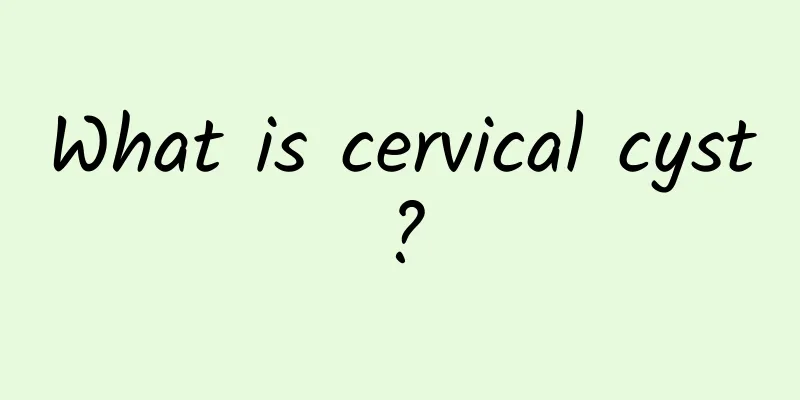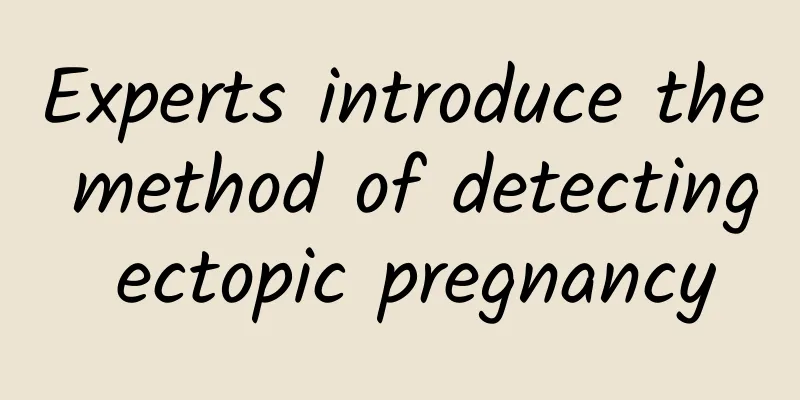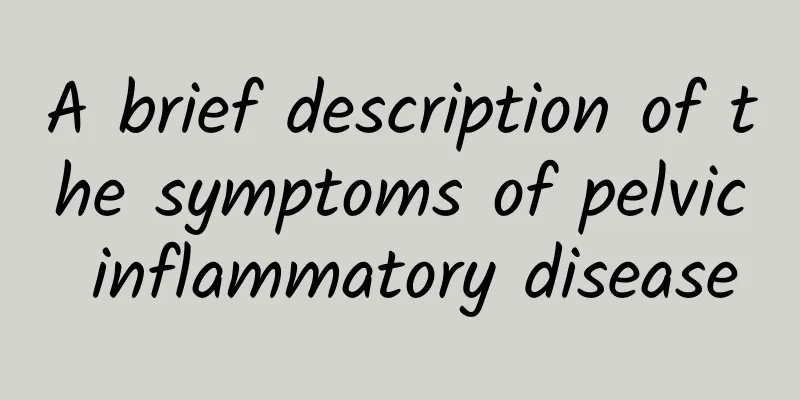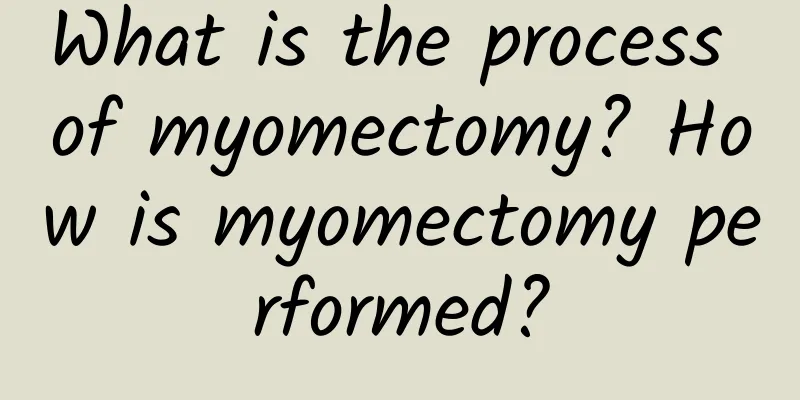What is cervical cyst?

|
Women's body structure is very special. Once they are not well cared for, they are prone to gynecological diseases. Cervical cysts are a common disease among women. What are the problems with cervical cysts? Many women feel worried after suffering from cervical cysts. How to treat cervical cysts? Cervical cysts will also have a certain impact on normal life and health. Are cervical cysts serious? What is cervical cyst? Cervical cyst is a common gynecological disease, a pathological manifestation of chronic cervicitis in women, also known as Nassler's cyst. Cervical cyst occurs in women aged 25-52, with an average age of 36. The formation of cervical cysts is related to the healing of cervical erosion. When cervical erosion is in a healing state, it will cause the glandular secretions to flow out, resulting in excessive proliferation of new squamous epithelial cells, covering the mouth of the cervical glands. Or extend into the duct and block the cervical duct. When the connective tissue around the gland proliferates and forms scars, the gland is gradually compressed, narrowing the glandular duct or even blocking it, the excretion of glandular secretions is hindered, and the cyst is retained. Cervical cysts are usually small, and some small cysts are about the same size as rice grains. Larger cysts are about the same size as corns and are usually scattered. They protrude from the surface of the cervix and are accompanied by erosion symptoms. Women with cervical cysts should not worry too much. As long as they are treated in time, they can reduce the spread, reduce the chance of other gynecological diseases, and avoid infertility or cancer. What to do with cervical cysts How to treat cervical cysts? The treatment of cervical cysts should choose different treatment methods according to the dispersion of the cysts. If the ovarian cysts are more scattered, they can be treated without treatment. If they are dense, they should be treated with phototherapy, microwave, laser, etc. 1. The cysts are small and scattered: If the cervical cysts are small and scattered, this type of cervical cyst is generally not treatable. As long as you go to the hospital for a check-up every year and do a cervical smear test to observe the degree of dispersion of the cysts, you can prevent the occurrence of cervical cancer and precancerous lesions. If the cervical cyst is small and the dispersion is not concentrated, this type of cervical cyst can usually be treated without treatment. 2. The cyst is small and dense or large and dense: The treatment of this type of cervical cyst includes general treatment, surgical treatment, physical therapy, etc. (1) General treatment If the patient's symptoms are relatively mild, general treatment will be used. More commonly, the vulva is washed with feminine care fluid, which can effectively prevent bacteria from entering the body from the vagina and inducing inflammation. Since some harmful bacteria will enter the female body from the female vagina and reach the cervix, vaginitis may be caused, leading to inflammation. (2) Surgical treatment Surgical treatment is used to treat cervical cysts larger than 3cm. If the drug is used for treatment, it still cannot control the disease. In order to avoid the continued growth of the cyst, early surgical treatment can control the growth of the cyst in time. Commonly used cervical cyst surgeries are LEEP knife (Lipp knife or UHF radio wave knife), BBT self-curing knife (RF minimally invasive self-curing knife), laparoscopy and other minimally invasive surgeries. Auxiliary drug treatment after surgical resection can speed up the repair of the cervix. (3) Physical therapy Physical therapy methods include light therapy, laser, microwave, cryotherapy, STG high-frequency radio technology, and ultrasound. 1. Traditional physical therapy: Traditional physical therapy for cervical cysts mainly uses laser, freezing, microwave and other methods. 2STG high-frequency radio wave technology: STG high-frequency radio wave technology is a good physical therapy for the treatment of cervical cysts. Compared with the LEEP knife used initially, STG high-frequency radio wave technology can be more accurately positioned to remove only the diseased tissue without damaging the normal cervix. STG high-frequency radio wave technology has the characteristics of one-time radical cure, less trauma, less pain, short treatment process, and complete tissue specimens. Women's reproductive function can be preserved after treatment with STG high-frequency radio wave technology. The cervix can be restored two months after treatment. After three months, pregnancy and childbirth can be achieved Cervical cyst is a common gynecological disease in clinical practice. Cervical cyst has a certain impact on women's body and mind. Severe patients may also cause infertility. Therefore, female friends must pay attention to personal hygiene in daily life. When you find that you have a gynecological disease, you should check the treatment method in time to prevent the disease from further developing. |
<<: Six key points to pay attention to after medical abortion
>>: Causes of pelvic inflammatory disease in women
Recommend
Self-relaxation therapy can relieve the mood of patients with functional uterine bleeding
Patients with functional uterine bleeding often b...
What are the methods for diagnosing adnexitis? Let me give you a detailed introduction
"What are the diagnostic methods for adnexit...
The younger age of abortion is the "bitter fruit" of ignorance
On May 19, Professor Chen Yijun of the Chinese Ac...
Things to note after ovarian cyst surgery
Ovarian cysts are a type of ovarian tumor in a br...
Can I take an X-ray if I have adnexitis?
The diagnosis of adnexitis can usually be assiste...
How to treat moderate cervical erosion
Moderate cervical erosion can be improved through...
Eating pumpkin can improve metabolic syndrome! Nutritionist Xie Yifang reveals: 4 benefits of nutritious light meals
More than half of the top ten causes of death in ...
Symptoms of uterine fibroids: 4 self-examination methods to help you understand your body
For female friends, uterine fibroids are a relati...
Is milky vaginal discharge normal?
Milky vaginal discharge is usually a normal physi...
How much does it cost to have a painless abortion?
How much does it cost to have a painless abortion...
Vaginal itching and abnormal fishy discharge
Vaginal itching accompanied by abnormal fishy sme...
Treatment of dysfunctional uterine bleeding
Menopausal functional uterine bleeding is general...
How to treat uterine fibroids? What are the methods of treating uterine fibroids?
The incidence of uterine fibroids is very high, w...
You can practice kicking at home with 4 sets of high-speed fat burning
Nowadays, people have bad postures, and even sitt...
What are the menstrual characteristics of uterine fibroids?
What are the menstrual characteristics of uterine...









